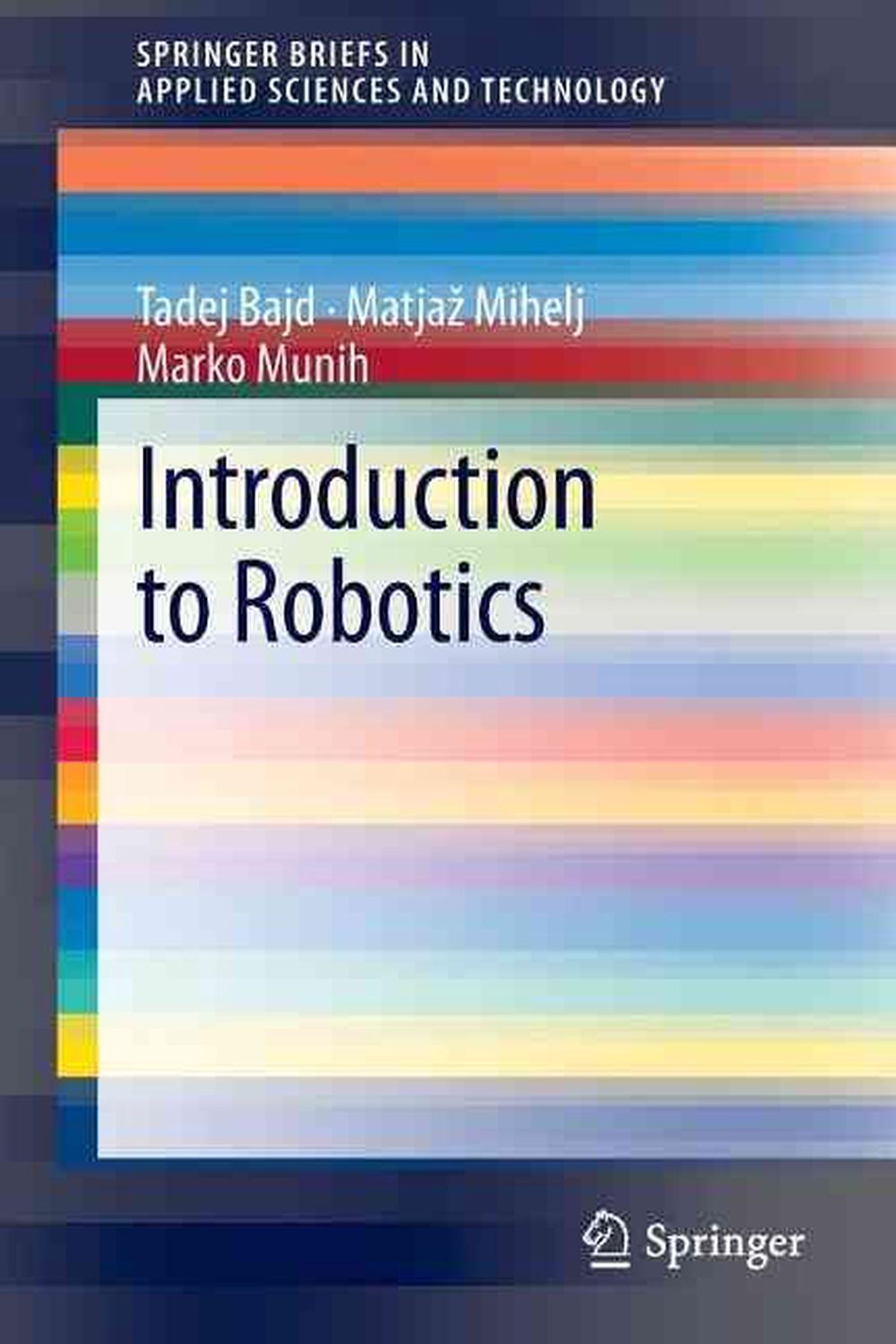
When you click on links to various merchants on this site and make a purchase, this can result in this site earning a commission. Affiliate programs and affiliations include, but are not limited to, the eBay Partner Network.
Introduction to Robotics by Tadej Bajd (English) Paperback Book

- Item No : 157163343645
- Condition : Brand New
- Brand : No brand Info
- Seller : the_nile
- Current Bid : US $72.24
-
* Item Description
-
The Nile on eBay

Introduction to Robotics
by Tadej Bajd, Marko Munih, Matjaž Mihelj
This book is focused on geometrical models of robot mechanisms. Rotation and orientation of an object are described by Rodrigues's formula, rotation matrix and quaternions. The geometrical robot model is based on Denavit Hartenberg parameters. Direct and inverse model of six degrees of freedom anthropomorphic industrial robots are also presented.
FORMAT
PaperbackLANGUAGE
EnglishCONDITION
Brand New
Publisher Description
This book is focused on geometrical models of robot mechanisms. Rotation and orientation of an object are described by Rodrigues's formula, rotation matrix and quaternions. Pose and displacement of an object are mathematically dealt with homogenous transformation matrices. The geometrical robot model is based on Denavit Hartenberg parameters. Direct and inverse model of six degrees of freedom anthropomorphic industrial robots are also presented.
Notes
Compact presentation of spatial transformations
Numerous original examples
Direct and inverse models of real industrial robotsBack Cover
This book is focused on geometrical models of robot mechanisms. Rotation and orientation of an object are described by Rodrigues's formula, rotation matrix and quaternions. Pose and displacement of an object are mathematically dealt with homogenous transformation matrices. The geometrical robot model is based on Denavit Hartenberg parameters. Direct and inverse model of six degrees of freedom anthropomorphic industrial robots are also presented.
Table of Contents
1 Introduction.- 2 Rotation and Orientation.- 3 Pose and Displacement.-
4 Geometric Robot Model.- 5 Geometric Model of Anthropomorphic Robot with Spherical Wrist.- Index.Review
From the reviews:"Bajd, Mihelj, and Munih … provide illustrations of robot movement for a quick understanding of the topic. … The authors illustrate theory with detailed examples, understandable to beginners in the field and a useful refresher for those better versed in the technology. Overall, it is a succinct primer on robotic kinematics that could serve as a 'CliffsNotes'-type companion to any introductory robotics movement course geared toward developing applied engineering sensibility in learners who are mathematically proficient. Summing Up: Recommended. Lower- and upper-division undergraduates; professionals/practitioners." (G. Trajkovski, Choice, Vol. 51 (2), October, 2013)
Review Quote
From the reviews: "Bajd, Mihelj, and Munih ... provide illustrations of robot movement for a quick understanding of the topic. ... The authors illustrate theory with detailed examples, understandable to beginners in the field and a useful refresher for those better versed in the technology. Overall, it is a succinct primer on robotic kinematics that could serve as a 'CliffsNotes'-type companion to any introductory robotics movement course geared toward developing applied engineering sensibility in learners who are mathematically proficient. Summing Up: Recommended. Lower- and upper-division undergraduates; professionals/practitioners." (G. Trajkovski, Choice, Vol. 51 (2), October, 2013)
Feature
Compact presentation of spatial transformations Numerous original examples Direct and inverse models of real industrial robots
Details
ISBN9400761007Author Matja MiheljLanguage EnglishYear 2013ISBN-10 9400761007ISBN-13 9789400761001Format PaperbackShort Title INTRO TO ROBOTICS 2013/EEdition Description 2013Media BookImprint SpringerPlace of Publication DordrechtCountry of Publication NetherlandsDEWEY 629.892Series SpringerBriefs in Applied Sciences and TechnologyEdition 2013thDOI 10.1007/978-94-007-6101-8Illustrations 42 Illustrations, black and white; VII, 83 p. 42 illus.Pages 83Publisher SpringerPublication Date 2013-03-19Audience Professional & Vocational






























